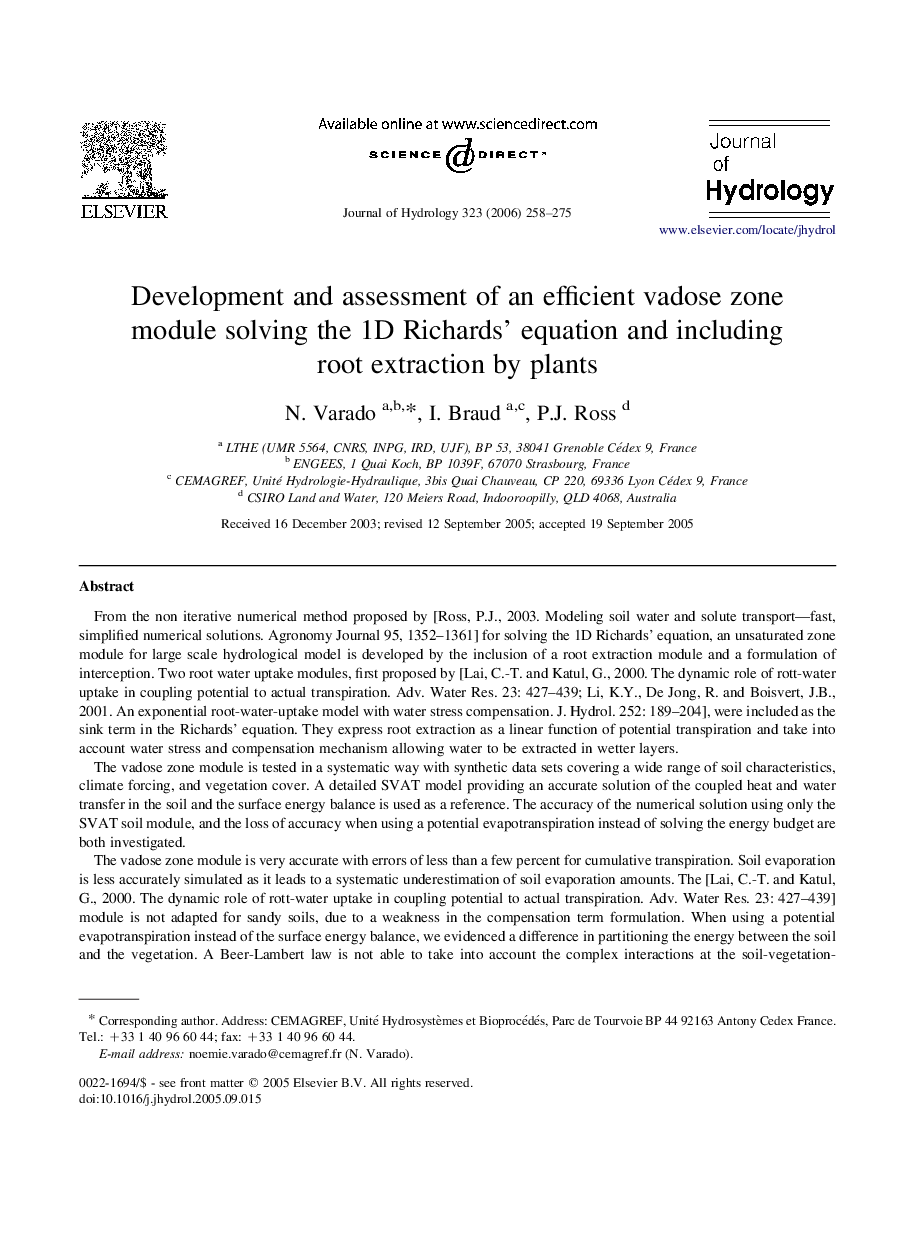| Article ID | Journal | Published Year | Pages | File Type |
|---|---|---|---|---|
| 4580633 | Journal of Hydrology | 2006 | 18 Pages |
From the non iterative numerical method proposed by [Ross, P.J., 2003. Modeling soil water and solute transport—fast, simplified numerical solutions. Agronomy Journal 95, 1352–1361] for solving the 1D Richards' equation, an unsaturated zone module for large scale hydrological model is developed by the inclusion of a root extraction module and a formulation of interception. Two root water uptake modules, first proposed by [Lai, C.-T. and Katul, G., 2000. The dynamic role of rott-water uptake in coupling potential to actual transpiration. Adv. Water Res. 23: 427–439; Li, K.Y., De Jong, R. and Boisvert, J.B., 2001. An exponential root-water-uptake model with water stress compensation. J. Hydrol. 252: 189–204], were included as the sink term in the Richards' equation. They express root extraction as a linear function of potential transpiration and take into account water stress and compensation mechanism allowing water to be extracted in wetter layers.The vadose zone module is tested in a systematic way with synthetic data sets covering a wide range of soil characteristics, climate forcing, and vegetation cover. A detailed SVAT model providing an accurate solution of the coupled heat and water transfer in the soil and the surface energy balance is used as a reference. The accuracy of the numerical solution using only the SVAT soil module, and the loss of accuracy when using a potential evapotranspiration instead of solving the energy budget are both investigated.The vadose zone module is very accurate with errors of less than a few percent for cumulative transpiration. Soil evaporation is less accurately simulated as it leads to a systematic underestimation of soil evaporation amounts. The [Lai, C.-T. and Katul, G., 2000. The dynamic role of rott-water uptake in coupling potential to actual transpiration. Adv. Water Res. 23: 427–439] module is not adapted for sandy soils, due to a weakness in the compensation term formulation. When using a potential evapotranspiration instead of the surface energy balance, we evidenced a difference in partitioning the energy between the soil and the vegetation. A Beer-Lambert law is not able to take into account the complex interactions at the soil-vegetation-atmopshere interface. However, under field conditions, the accuracy of the vadose zone module is satisfactory provided that a correct crop coefficient could be defined.As a conclusion the numerical method proposed by [Ross, P.J., 2003. Modeling soil water and solute transport—fast, simplified numerical solutions. Agronomy Journal 95, 1352–1361] coupled with the [Li, K.Y., De Jong, R. and Boisvert, J.B., 2001. An exponential root-water-uptake model with water stress compensation. J. Hydrol. 252: 189–204] root extraction module provides an efficient and accurate solution for inclusion as a physically-based infiltration-evapotranspiration module into larger scale watershed models.
